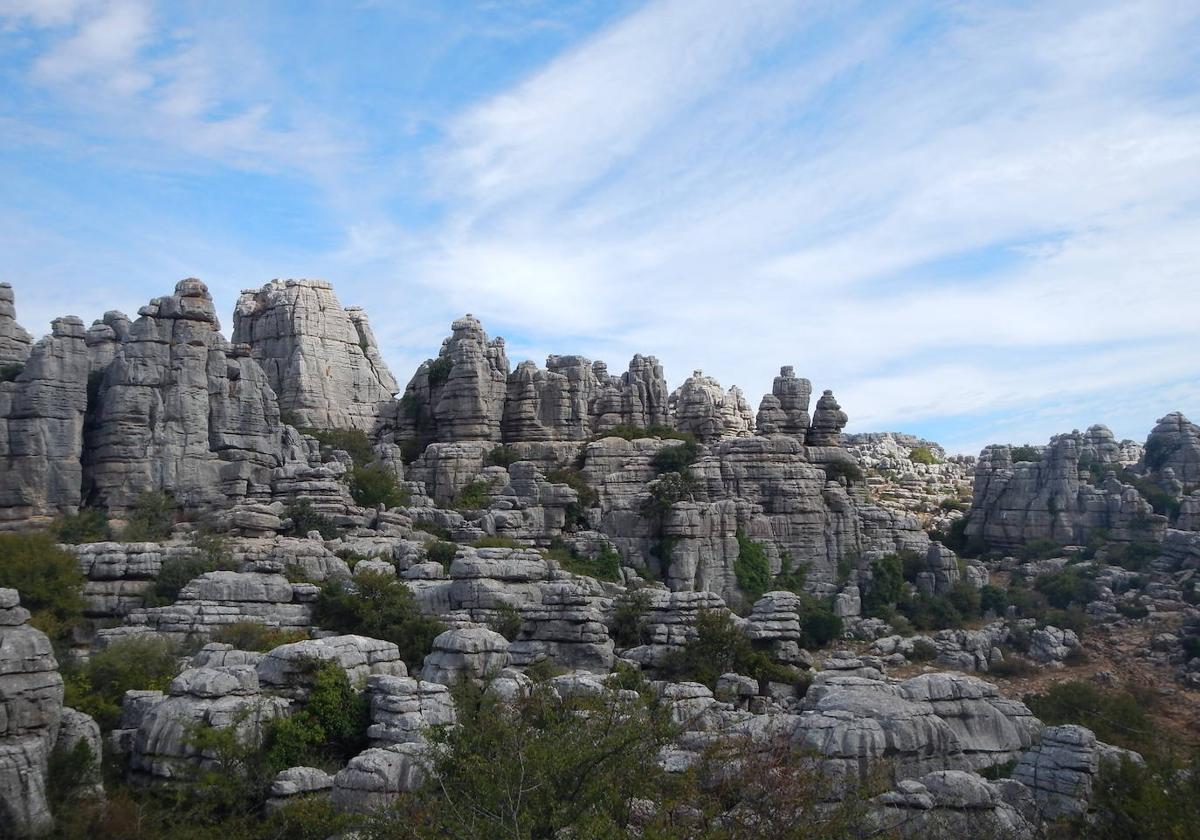Torcal de Antequera: a labyrinth sculpted by nature over millennia
Located in the north of Malaga province, it is one of the most spectacular natural sites not only in Andalucía but in the whole of Spain
It is a veritable labyrinth of sculpted stones, which have taken on unique shapes. Some look like animals or objects, others are truly dreamlike. Over the last millennia, the wind and rain have been responsible for shaping them. Now, El Torcal de Antequera is one of the most spectacular natural sites not only in Andalucía but in the whole of Spain.
This karst complex, which has a protected area of almost 12 square kilometres, has its origins in the Jurassic period, 175 million years ago, when this enclave, located at an altitude of over a thousand metres, was covered by the Tethys Sea.
This group of limestone rocks is divided into four distinct areas: Sierra Pelada, Tajos y Laderas, Torcal Alto and Torcal Bajo. The last two are the most striking from a geomorphological point of view. There are large rocks that have been given names that define their original shapes, objects or living beings. These are the cases of rocks such as the Maceta (plant pot), the Camello (camel), the Sombrerillo (hat), the Cara de Perro (dog's face), the Siete Mesas (seven tables), and an infinite number of natural sculptures waiting to be discovered.
But the most striking figure is the one that goes by the name of El Tornillo (the screw), which has the status of natural monument of Andalucía. In addition to this institutional recognition, this large oddly shaped rock has become the image of El Torcal. Also unusual are the alleys, sometimes very narrow, which allow you to enter the heart of this karst maze.
Its elevated position makes El Torcal a splendid balcony from which to contemplate unique landscapes. This is the case of the Mirador de las Ventanillas viewpoint, from where you can see the valley of the river Campanillas and the village of Villanueva de la Concepción. On the clearest days you can also see the African continent.
The ecological value of El Torcal is very high, thanks to the more than 600 botanical species that have been found. As far as fauna is concerned, mammals such as foxes and mountain goats can be found. The latter can be spotted, although it is necessary to walk quietly. It is easier to spot the numerous birds of prey that nest in the rocks.
This ecological enclave can be visited at any time of the year, including summer, when sunset hikes or star-gazing sessions are held.

